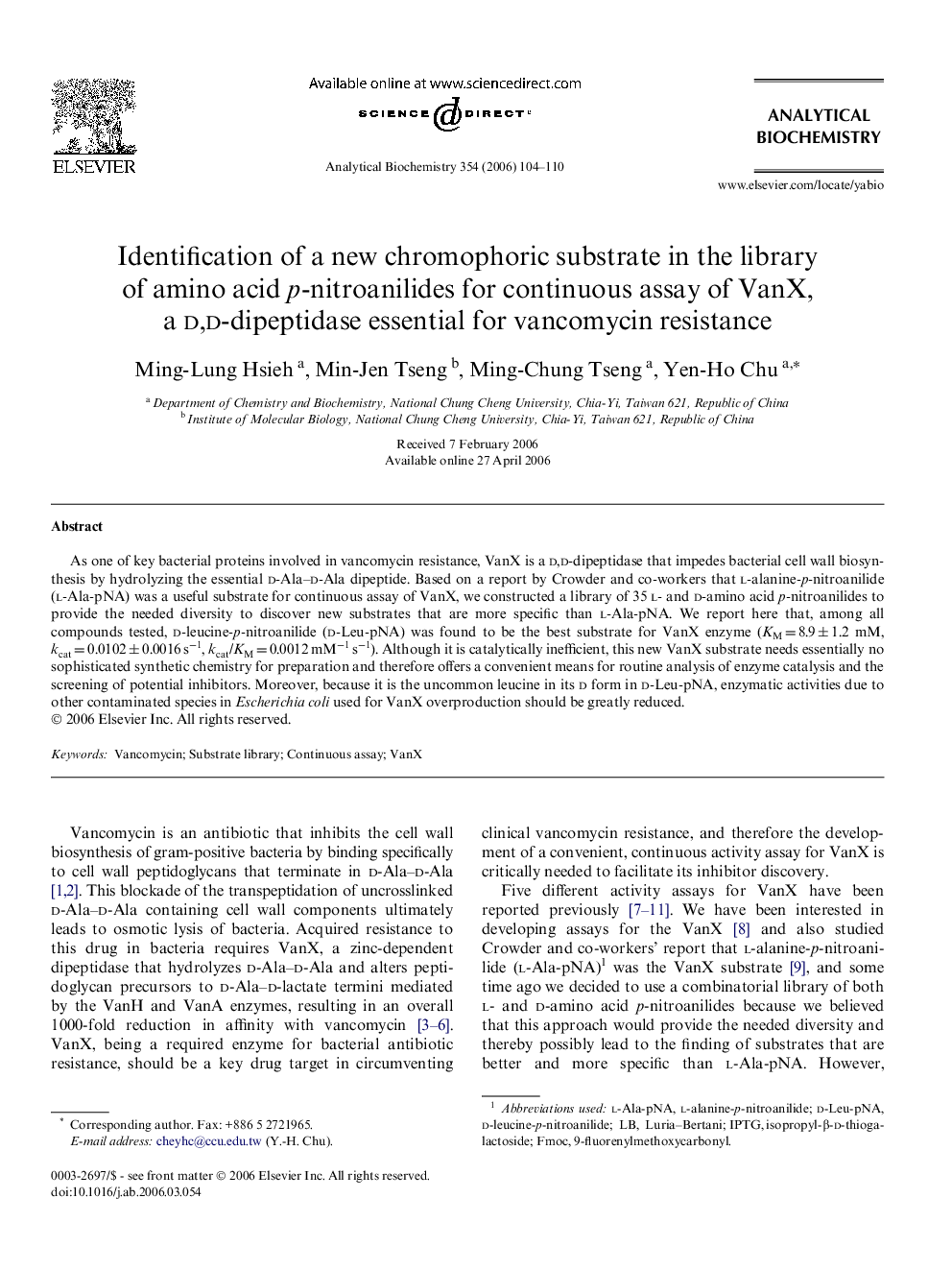| Article ID | Journal | Published Year | Pages | File Type |
|---|---|---|---|---|
| 1177516 | Analytical Biochemistry | 2006 | 7 Pages |
As one of key bacterial proteins involved in vancomycin resistance, VanX is a d,d-dipeptidase that impedes bacterial cell wall biosynthesis by hydrolyzing the essential d-Ala–d-Ala dipeptide. Based on a report by Crowder and co-workers that l-alanine-p-nitroanilide (l-Ala-pNA) was a useful substrate for continuous assay of VanX, we constructed a library of 35 l- and d-amino acid p-nitroanilides to provide the needed diversity to discover new substrates that are more specific than l-Ala-pNA. We report here that, among all compounds tested, d-leucine-p-nitroanilide (d-Leu-pNA) was found to be the best substrate for VanX enzyme (KM = 8.9 ± 1.2 mM, kcat = 0.0102 ± 0.0016 s−1, kcat/KM = 0.0012 mM−1 s−1). Although it is catalytically inefficient, this new VanX substrate needs essentially no sophisticated synthetic chemistry for preparation and therefore offers a convenient means for routine analysis of enzyme catalysis and the screening of potential inhibitors. Moreover, because it is the uncommon leucine in its d form in d-Leu-pNA, enzymatic activities due to other contaminated species in Escherichia coli used for VanX overproduction should be greatly reduced.
